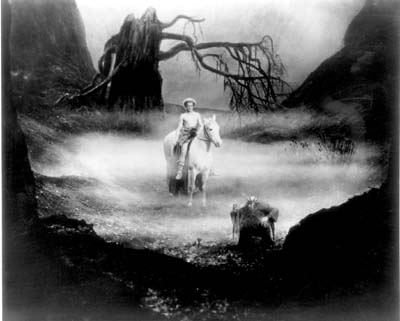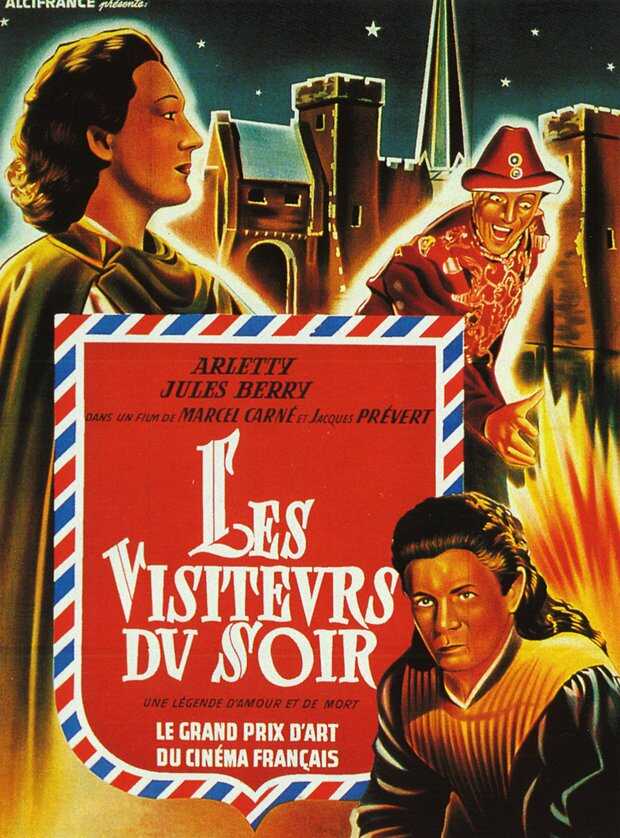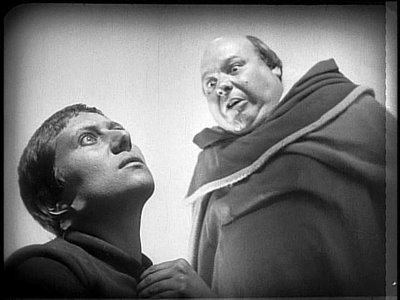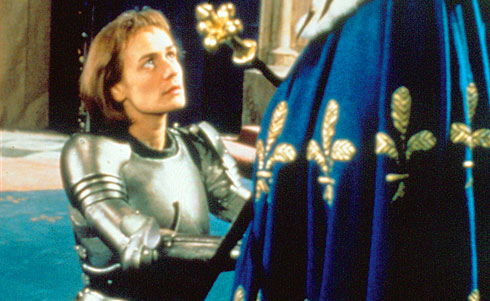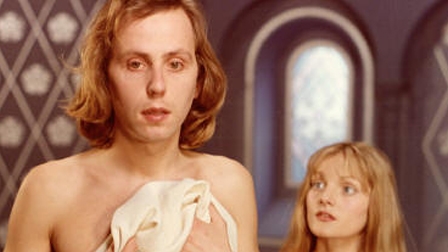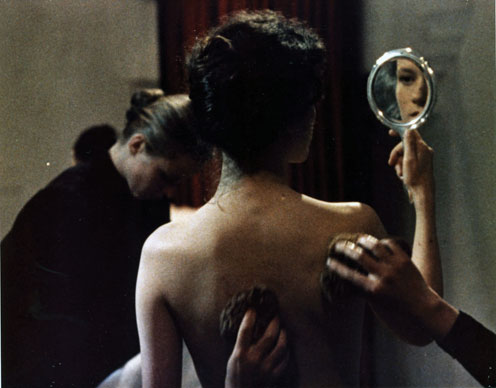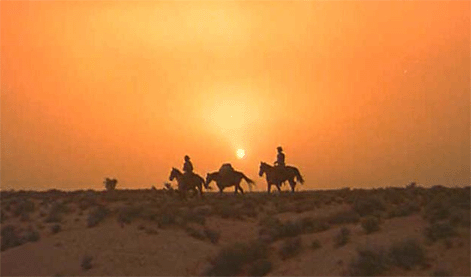Below is my Foreword to The Medieval Hero on Screen: Representations from Beowulf to Buffy (McFarland, 2004), a collection edited by Martha W. Driver and Sid Ray, minus a few editorial tweaks and abridgements. — J.R.
It’s a curious fact, at least to me, that I’m writing a forword to this book, even a short one. I’m neither a medievalist nor a historian; I haven’t seen many of the films discussed, and, perhaps because I spend much of my time reviewing films for a weekly newspaper, the Chicago Reader, I have seen but have mainly forgotten some of the others. As a professional film critic who occasionally gets invited to speak and teach at college campuses, I have the benefit of both close and long-range views of film history, and try to create some two-way traffic between these positions in my writing.
It has always been a handicap for film scholars that one can’t necessarily count on all the important works being widely accessible or even widely known. In the essays that follow, some of my favorite films with medieval themes and settings have only been briefly touched upon —- I’m thinking especially of Carl Dreyer’s The Passion of Joan of Arc and Eric Rohmer’s Perceval -— while others, including Fritz Lang’s magnificent two-part, five-hour Die Nibelungen (1924), and Les visiteurs du soir (1942), a haunting fantasy written by Jacques Prévert and Pierre Laroche and directed by Marcel Carné during the French Occupation, are not mentioned. (I realize that Les visiteurs du soir has been relatively scarce in the U.S. in recent years -— unlike Die Nibelungen, a beautiful restoration of which is now available on DVD from Kino Video.)
I’m grateful to Martha Driver, one of this book’s coeditors, for giving some respectable attention to Robert Bresson’s remarkable (if eccentric) Lancelot of the Lake even if I disagree with her translation of “écriture” —- an admittedly difficult and ambiguous term to render in English —- in her introduction to the first section. When Bresson declared, “Le cinéma n’est pas un spectacle, c’est un écriture,” I believe he meant something closer to, “The cinema isn’t a spectacle, it’s a form of writing” —- meaning, in effect, a form of expression that’s as personal as a signature yet also as objectively material as a block of text (which may or may not be a document).
This isn’t to say that the cinema isn’t a document, regardless of what Bresson meant or didn’t mean; all the essays in this book testify to the fact that it is. But it’s also an art, and the fact that it traces something (and is therefore an artistic act) and also leaves a trace (which makes it a historical artefact) helps to explain why writing about it becomes such a complicated business. Most complicated of all is the fact that the historical trace left by a film has an artistic inflection —- which doesn’t necessarily mean that its makers have artistic sensibilities (personally, I entertain some doubts about Luc Besson, based on past experience, which is one reason why I’ve avoided seeing his The Messenger: The Story of Joan of Arc), only that its effects on viewers always have an artistic dimension.
In one way or another, I would contend that all the contributors to this volume are grappling with this complexity in different ways, even if the art that they have in mind is more often the art of history than it is the art of cinema. (Maybe some of these contributors view history not as an art but as a science —- or at least as what some people view as a social science. But if they do, this is precisely where I part company with them.) And some of the most interesting essays here are historical even when they take up medievalism to speak about the present rather than the past. I’m thinking especially of Anke Bernau’s revealing observations on the subject of medieval virginity, Thomas Henthorne on Star Wars and E.T.: The Extra-Terrestrial, and Carl Grindley’s reflections on medieval weaponry, all of which have many pertinent and timely things to say about the world we’re living in. And other pieces here, including Kevin J. Harty’s analysis of the various film versions of a Damon Runyon’s “Little Miss Marker,” are surely swimming in the same water. This makes them political and aesthetic acts in which medievalism becomes a way of decoding both the present and the recent past, much as Orientalism was for the late Edward Said.
The passages in this collection that I’m more prone to differ with are those that strike me as insufficiently attuned to film history, despite their fidelity to other kinds of history. Henthorne is astute when he details all the popular boys’ adventure stories that got worked into Star Wars, but neglectful when he leaves out the imitations of specific shots from Leni Riefenstahl’s epic Nazi spectacle The Triumph of the Will and diverse World War 2 air battles from Hollywood features of the early 40s, both of which were used by George Lucas in creating his own storyboards. I’m even more bothered by Edward Benson’s allusion to “the surviving print of Dreyer’s Passion” —- which implies that the film’s original version is lost (in fact, it was rediscovered in a Norwegian mental asylum in the 1980s, and is currently available in excellent editions on video and DVD) simply because it differs from the published screenplay —- and to his supposition in the same essay that Jacques Rivette would have let an interest in “luring adolescent male viewers to repeat showings” of his Joan the Maid determine the nature of Sandrine Bonnaire’s haircut in that two-part film. Neither of these objections, however, invalidates or even challenges Benson’s understanding of the Maid -— a valuable interpretation of the historical record which affects my readings of the Dreyer and Rivette films — but in both cases I think the artists have been undervalued, at least where their art is concerned.
I should add that the subject of the medieval in film is so immense that even a comprehensive collection like this one can’t expect to do much more than broach some of the more pertinent topics and approaches. If I were to make a list of all the films that taught me something about medievalism, I’d undoubtedly have to include even John Ford’s classic 1956 western The Searchers —- not so much for its sexual politics (though these are surely relevant) as for its handling of narrative time and duration, in particular the change of seasons, in relation to its epic quest. But, then again, it’s an important part of the value of a book of this kind to expand and deepen our grasp of the subject from the anecdotal to the cosmic, broadening our horizons in the process, and this is a task that the editors and other contributors have accomplished with imagination, scholarship, and discernment.
Jonathan Rosenbaum
November 2003

